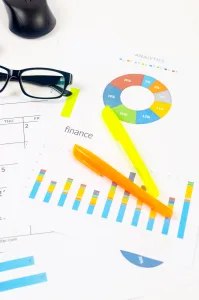Every website page is like a puzzle piece, and when they’re all put together in the right way, it can be a thing of beauty. The challenge for webmasters is to figure out how to optimize each page so that it fits into the grand design – optimizing every website page around user intent is essential if you want to be successful. In this article, we’ll take a closer look at what you need to do in order to ensure your pages are tailored for maximum success.
We live in an age where instant gratification has become something of an expectation. People go online looking for answers quickly and easily, which means there’s no room for confusion or ambiguity on any given webpage. It needs to give them exactly what they’re after; otherwise, they’ll move onto another site without hesitation. That’s why understanding user intent and devising ways to incorporate it into each page is so important – failure to recognize its importance can have dire consequences for your business.
From keyword research through to content creation, there are many steps involved in creating optimized webpages that satisfy users’ needs and make sure their journey through your site is as smooth as possible. Keep reading as we uncover some key strategies you can use to achieve success with optimization efforts!
1. Identify User Intent
 As you look to optimize every page of a website, the first step is to identify user intent. This can be done by examining data and analysing trends in search terms that have been used on the website. It’s important to understand why users are visiting your site, understanding their needs and goals. While this might seem like an overwhelming task, it doesn’t have to be complicated; there are several techniques available for identifying user intent from analytics data or even through customer surveys.
As you look to optimize every page of a website, the first step is to identify user intent. This can be done by examining data and analysing trends in search terms that have been used on the website. It’s important to understand why users are visiting your site, understanding their needs and goals. While this might seem like an overwhelming task, it doesn’t have to be complicated; there are several techniques available for identifying user intent from analytics data or even through customer surveys.
Once you know what people want when they visit your site, you need to think about how best to structure each page around those objectives. You should consider things such as how easy it is for visitors to find what they’re looking for, whether content matches up with users’ expectations, and if navigation elements provide clear paths towards desired results. Additionally, pay attention to page loading times and mobile optimization – these days more than ever people expect pages to load quickly no matter what device they use.
By taking all of these points into account, you’ll create webpages that are tailored specifically around user intent and help them achieve their goal faster. Your visitors will appreciate the effort put into delivering relevant content that meets their needs and ultimately helps them succeed online. With thoughtful design decisions based on knowledge of user intent, you can make sure that every page of your website offers a great experience for its visitors.
2. Analyse Website Content
According to research by Nielson Norman Group, most users only spend 10-20 seconds on a website before deciding if it meets their needs. This means that analysing website content to make sure it has a clear value proposition which will capture your visitors attention is essential when optimizing your page around user intent.
When analysing your website’s content, you’ll want to look at how the text and visuals are used together in order to meet user intent. Are there enough visuals? How are they being used – do they serve as visual representations of the topic instead of just taking up space? Are any pieces of information missing from the page, either through words or graphics?
Finally, consider if you need more calls-to-action (CTAs) throughout your site. CTAs should be placed strategically in order to encourage visitors to take action. Also ask yourself if the navigation structure makes sense; this plays an important role in guiding people towards what they’re looking for quickly and efficiently.
By asking these questions while analysing webpages and making necessary changes accordingly, you can ensure that each webpage is optimized with respect to user intent.
3. Establish A Clear Call-To-Action
A call-to-action (CTA) is an absolute must for any website page to be successful. Without a CTA, it’s like trying to win the race without even starting! Establishing a clear call-to-action is essential in optimizing every website page around user intent.
When creating your CTA, make sure that it stands out from the rest of the content and encourages readers to take action. Your CTA should be short, direct, and easy to understand – avoid using complex language or too much punctuation as this can confuse users. Additionally, use words like ‘click’, ‘discover’, and ‘learn more’ which will draw people’s attention and help them take the desired action quickly.
In order for your website pages to be successful, you need to ensure that they have a well-thought-out CTA included somewhere on the page. This could be at the top of each page or placed strategically throughout depending on how long the content is. It’s also important to test different variations so that you can see what works best for your audience. Doing this will give you valuable insights into user behaviour and allow you to optimize your pages accordingly for better results.
4. Leverage Internal Linking
 Moving on from establishing a clear call-to-action, the next step in optimizing every website page around user intent is leveraging internal linking. Internal links are important because they link pages within your own domain and provide users with more ways to navigate through your site. This helps create an easy navigational experience for visitors by providing them with additional resources related to their search query or topic of interest. It can also help boost SEO rankings, as it allows search engines to better index all the pages on your website.
Moving on from establishing a clear call-to-action, the next step in optimizing every website page around user intent is leveraging internal linking. Internal links are important because they link pages within your own domain and provide users with more ways to navigate through your site. This helps create an easy navigational experience for visitors by providing them with additional resources related to their search query or topic of interest. It can also help boost SEO rankings, as it allows search engines to better index all the pages on your website.
Using internal links strategically can also help reduce bounce rate by guiding people towards other relevant content that may be of further use to them. By creating helpful connections between different pieces of content, you can keep visitors engaged longer and increase the chances of them taking action based on what they find on each page. Additionally, you should ensure that all internal links open in new tabs so that visitors don’t lose track of where they were when clicking away from the current page.
Ultimately, implementing effective internal linking strategies is key for keeping users engaged and ensuring successful optimization of website pages around user intent. From boosting SEO rankings and reducing bounce rates to providing users with easier navigation options, utilizing internal links properly can make a huge difference in achieving success online.
5. Incorporate Keywords Strategically
As the final piece of the puzzle, incorporating keywords strategically is key to optimizing website pages. It’s like a jigsaw; with each keyword placed precisely in its place, the whole picture comes together into one cohesive image.
It’s important to remember that when selecting and using keywords on webpages, relevancy should always be top priority. Keywords must reflect the user intent for that page and should be well integrated within both headings and body text. Additionally, they can also be used in meta descriptions to help draw people to your site from search engine results pages (SERPs).
Using natural language rather than trying to “stuff” too many words into sentences will boost organic rankings while helping readers better understand what you’re saying. This strategy shows search engines that not only do you care about reader experience, but you are also aware of best practices related to SEO – two essential components needed for successful optimization efforts.
6. Utilize Visual Content
As the saying goes, a picture’s worth a thousand words. The same can be said for website optimization; that is, visual content can often speak volumes in terms of user intent. So as we move on to our sixth step in optimizing every website page around user intent to be successful, let’s delve into how utilizing visuals can get us there.
Visual content comes in many forms and shapes – from infographics and images to videos and illustrations – all with their own unique advantages when applied correctly. When used thoughtfully within a webpage, they are able not only to capture users’ attention quickly but also keep them engaged longer. According to research that was published on Forbes, “91% of consumers now prefer interactive and visual content over traditional, text-based or static media.”.
So if you want your website pages to make an impact while adhering to user intent, it may be time to consider including engaging visuals – from creating creative multimedia posts or experimenting with interactive elements like polls and quizzes – whatever works best for your audience! After all, what better way is there than combining the power of words with eye-catching visuals?
7. Monitor And Measure Your Results
 Finally, it’s time to measure the success of your website and its pages. Monitoring user behaviour is essential for understanding how well each page is performing around their intent. It can be a daunting task but one that must be done in order to make improvements and optimize each page for maximum impact.
Finally, it’s time to measure the success of your website and its pages. Monitoring user behaviour is essential for understanding how well each page is performing around their intent. It can be a daunting task but one that must be done in order to make improvements and optimize each page for maximum impact.
It’s important to look at key performance indicators such as organic search rankings, bounce rates, average session duration and conversions when assessing the effectiveness of a website page. Analysing this data will give you an idea of which pages are working best, allowing you to tweak content or adjust targeting accordingly. Additionally, leveraging tools like heat maps can help visualize where users are clicking on a given page, so you have further insight into user engagement with specific elements.
Getting feedback from users about what they liked (or didn’t) about particular webpages can also provide valuable insights–especially if gathered through surveys or interviews–which could lead to adjustments being made based on direct customer input. In short, monitoring and measuring results provides invaluable information to inform strategies going forward, so you can ensure every webpage meets all expectations set by visitors.
Conclusion
Optimizing website pages around user intent is key to success. It takes a bit of effort, but once you’ve taken the time to identify user intent and analyse your content, incorporating keywords strategically and leveraging internal linking, you can really see an increase in engagement. Don’t forget about visual content either; it helps break up text-heavy pages and keeps eyeballs moving – think of it like a ‘cherry on top’ that adds flavour to your webpages!
With all these steps in place, it’s essential to monitor results regularly, so you know what works best for each page on your site. If something isn’t working as intended, don’t be afraid to go back and tweak things until they are just right. After all, Rome wasn’t built in a day – but with hard work and dedication there’s no reason why your website won’t become ‘the bee’s knees.
At the end of the day, optimizing webpages according to user intent should always remain at the forefront of any digital marketer or business owner’s mind. With consistent effort and testing, not only will users have an enjoyable experience navigating your website, but also you’ll reap the rewards from increased conversions.
